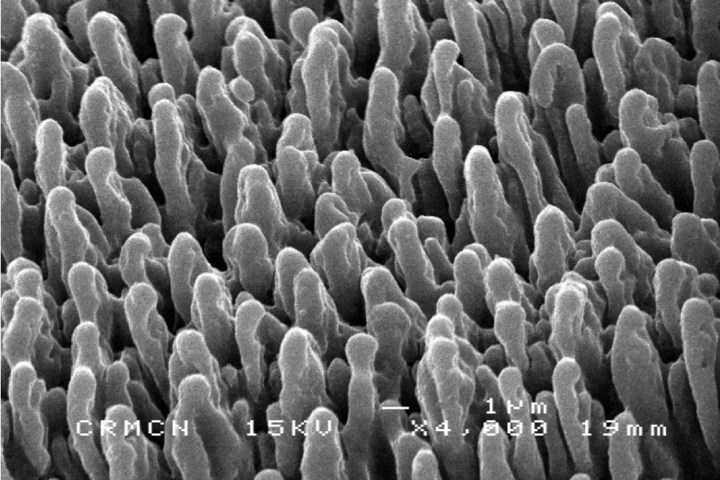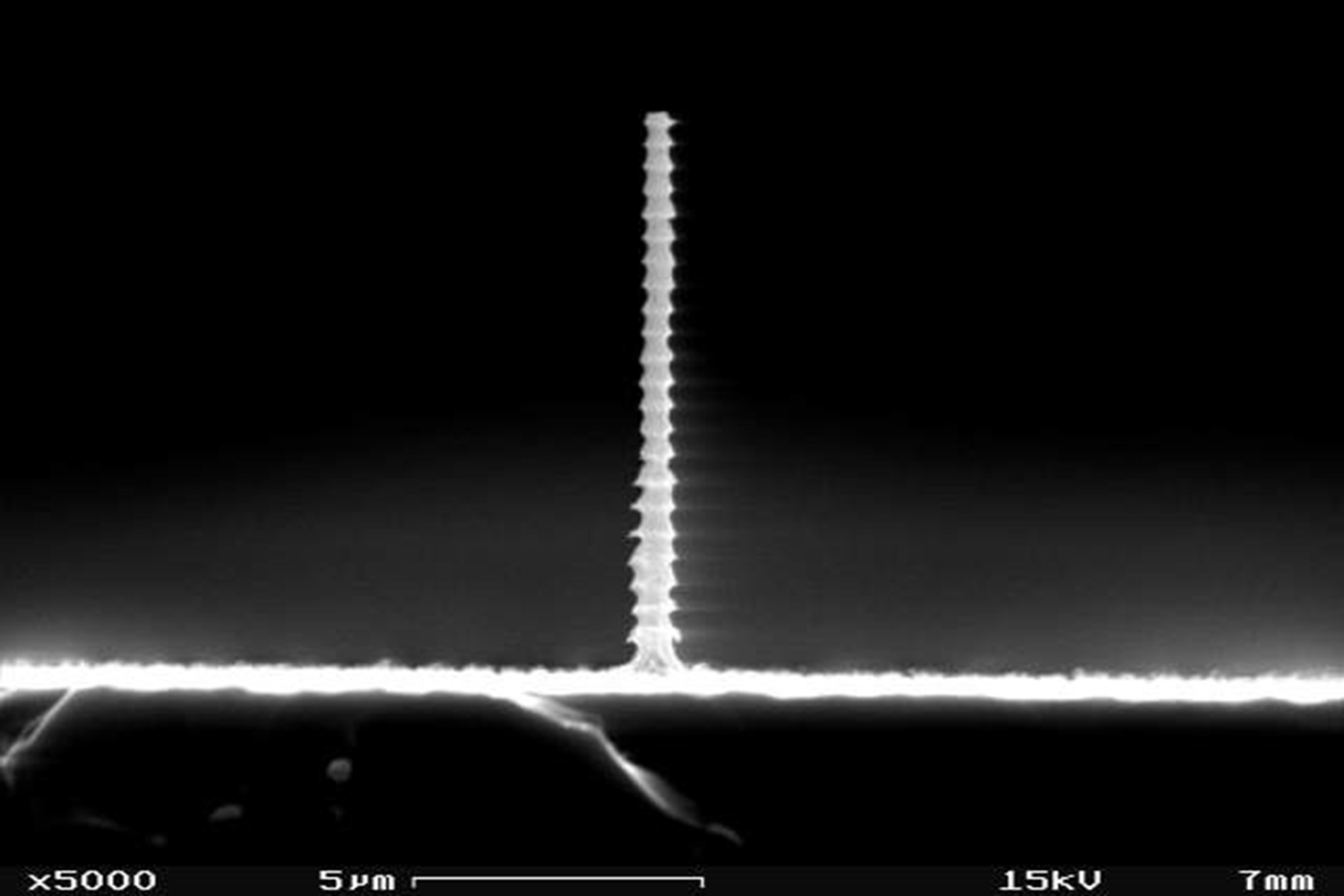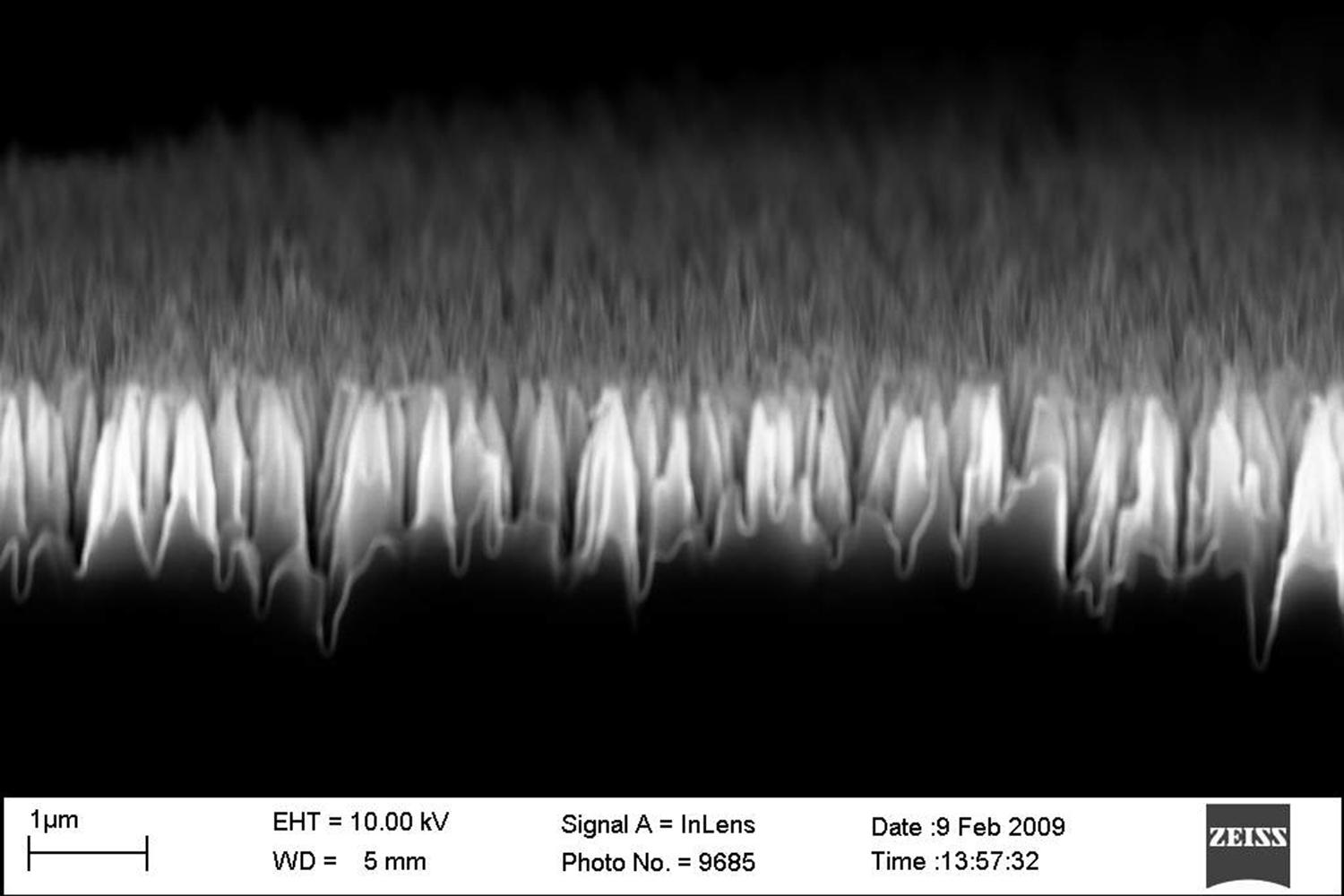
When a patient gets an implant, the body’s cells and bacterial cells vie for surface space on the new device. If the bacteria claim too much territory, it may pose complications, as the body’s cells could fail to incorporate the device. So researchers decided to develop an antibacterial surface material and in so doing, turned to one of the trustiest sources of inspiration: nature.
“When we put bacterial cells onto the wing we found that the cells were actually killed by the surfaces.”
Many insect wings seem to be free from bacterial colonies. Ivanova and her team knew this but assumed insects, such as dragonflies, repel bacteria from their wings, like a waterproof jacket repels raindrops. But they discovered something much more morbid.
“This phenomenon was totally unexpected,” co-author and Swinburne University of Technology professor Dr. Elena Ivanova told Digital Trends. “When we put bacterial cells onto the wing membrane we found that the cells were attached and were actually killed by the surfaces.”
Dragonfly wings aren’t merely slippery — they’re deadly.
Inspired by this idea, the researchers used “nanotopology” to develop a surface material called black silicon, with spikes that are big enough to tear apart bacterial cells (which are comparatively tiny) but too small to harm the relatively large animal cells.

To test their new material, Ivanova and her team coated surfaces with either their spiky black silicon (the image to the left) or smoother regular silicon (the image to the right). They added a few pathogenic bacteria (red) and some cells from a monkey’s kidney (green/purple) to see which would fare better on which material. On the regular silicon, the bacterial cells took over, making the monkey cell sickly in the process. On the black silicon, the monkey cell grew healthily while the bacterial cells appeared to rupture from the strain of the spikes.
Ivanova notes that, although the black silicon material is promising, the nanotopology technique is itself important since it can be applied to a variety of materials. She and her team are currently developing a bactericidal surface for titanium, which she says will be available for implants in the “near future.”





